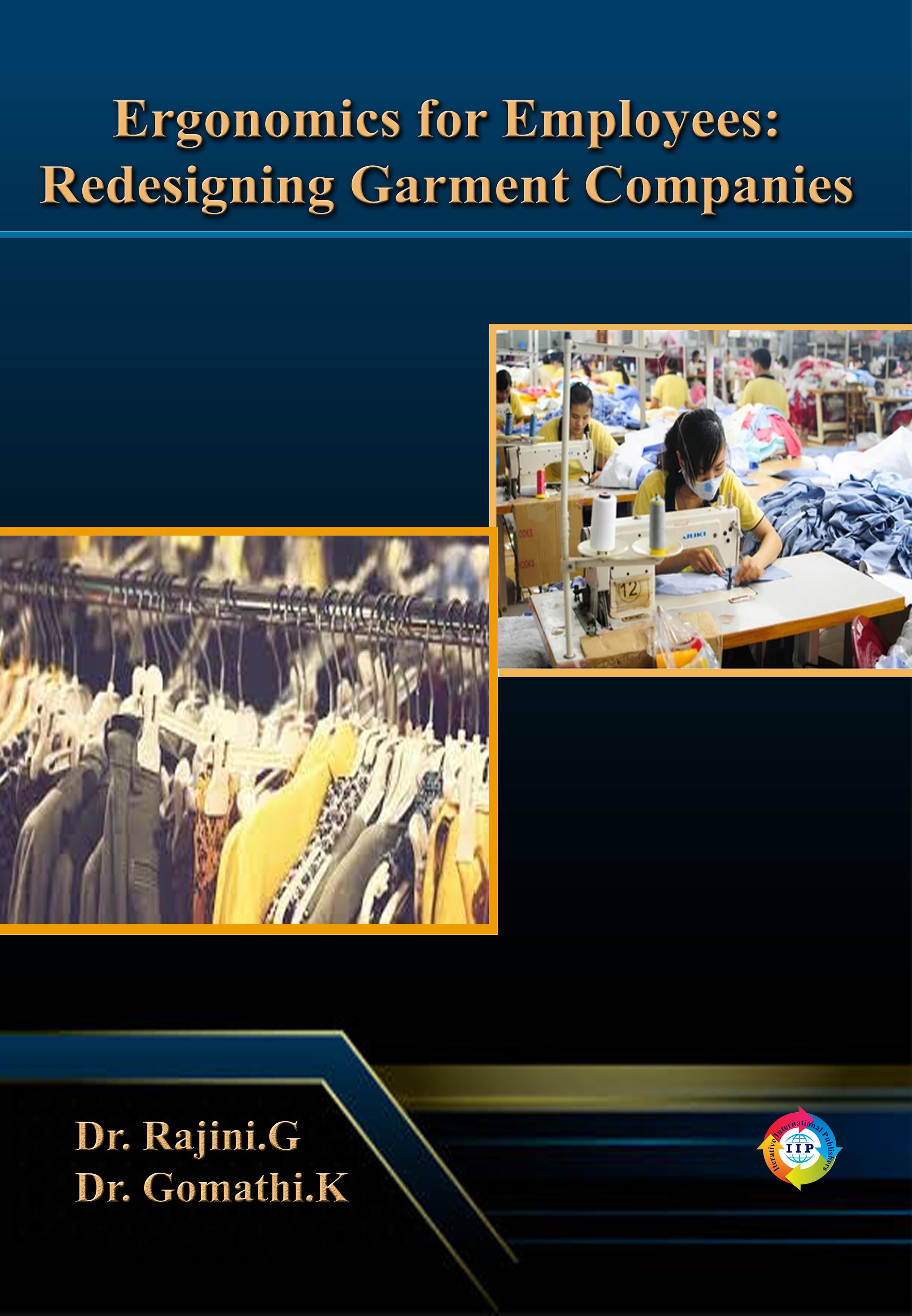
ERGONOMICS FOR EMPLOYEES: REDESIGNING GARMENT COMPANIES
-
TypePrint
- CategoryAcademic
- Sub CategoryPhD Thesis/Thesis
- StreamManagement
Ergonomics discipline promotes a holistic human centric approach to work systems design that considers the physical, Cognitive, social, organization environmental and other relevant factors. The purpose of the book is to focus on human Engineering factors (Physical Workplace environment, Machines, task, Psychosocial Factors), organizational ergonomics, Resilience, Employee well-being and Employee Retention based on the demographic variables and also develop and compare models influencing ergonomics, employee well-being and Employee retention. We intend to examine the vital demographic variables discriminating the cause for employee retention. The theoretical foundation Herzberg's two-factor theory and self- determination theory are narrated. Ergonomics increases the quality, productivity and reduces the cost. On the employee perspective it increases well-being and retention in a company. India being 3rd largest exporter of textile goods and second largest employer accounting for 2% of GDP and a powerful means of India’s growth in the century, writing a book about this sector is to be the need of the hour. In India Tirupur a place from Tamilnadu contributes nearly half of the Knitwear exports for the past 5 years. The Content of the book will state how the data was collected from Tirupur by multi-stage sampling with the structured bilingual questionnaire from 453 employee’s and analysed through statistical software. Out of the four independent variables called human engineering factors, task was not contributing to Organisational ergonomics, but it was the most vital factor discriminating the employee retention. Resilience, which meant bouncing back from adversities, was not moderating overall well-being as well as retention. This was quite surprising to note that at garment industry resilience has a lesser impact which might be due to monotonous and repetitive jobs. Likewise objective well-being was not a significant variable leading to Employee retention. Whereas Subjective well-being which is the individual's current evaluation of pleasant and unpleasant effects and their life satisfaction was the predominant variable contributing to the Organisational ergonomics model which ultimately leads to Employee retention. Employee retention depends on their Age, income and Overtime. Male employees, 41 to 50 years age group and married employees are not job hoppers as far as Garment Industry is concerned. Thus the book opens up new dialogues on well-being of employees through ergonomics which will enhance the growth of economy of our country as well as take care of Human assets.
**Note: IIP Store is the best place to buy books published by Iterative International Publishers. Price at IIP Store is always less than Amazon, Amazon Kindle, and Flipkart.





COMMENTS
No Review found for book with Book title. ERGONOMICS FOR EMPLOYEES: REDESIGNING GARMENT COMPANIES